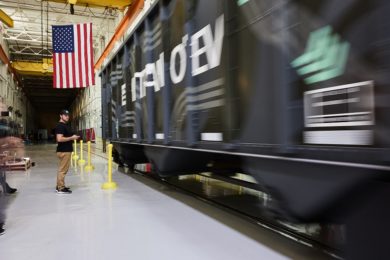At the SME MineXchange Annual Conference in Phoenix this week, Modular Mining’s Braden Weisheit, Global Sales Manager, Machine Guidance systems presented an overview of the company’s ProVision Guided Spotting system, which leverages high precision GPS technology to safely and efficiently guide haul truck operators while reversing towards the shovel loading position, without guidance from the shovel. An intuitive display provides continuous feedback and it enables rookie operators to match even the best veteran performance.
Optimising the load cycle at surface mines continues to represent a prime opportunity for productivity improvements. With the recent site-wide implementation of guided spotting, which Modular says it the mining industry’s “first integrated operator-assist technology” at a large Tier 1 mine in South Africa, the challenges often associated with optimisation attempts are now swiftly being addressed in the real world.
The paper presented real data from this full-site deployment to highlight some of the true productivity improvements that mines can attain by leveraging high-precision GNSS to guide their truck operators to the correct loading spot at the shovel, including dual-side loading, optimising the shovel swing angle, minimising shovel hang time and truck re-spotting and equalising operator performance. Modular showed the technology’s potential to reduce hang time by 18 seconds and cycle time by 26 seconds. Over the course of a year this adds up to millions of tonnes of additional material mined.
There are also additional opportunities using this technology on trucks in applications like crusher dumping, dozer spotting, paddock dumping, pantograph guidance and lane keeping guidance. Guided spotting still comes within the levels 1 to 3 of the automation journey, which are all full operator responsibility, but it is using some of the key learnings gleaned from full Level 4 AHS and applying these back into manual fleet operations, which after all still represent the vast majority of the market.










